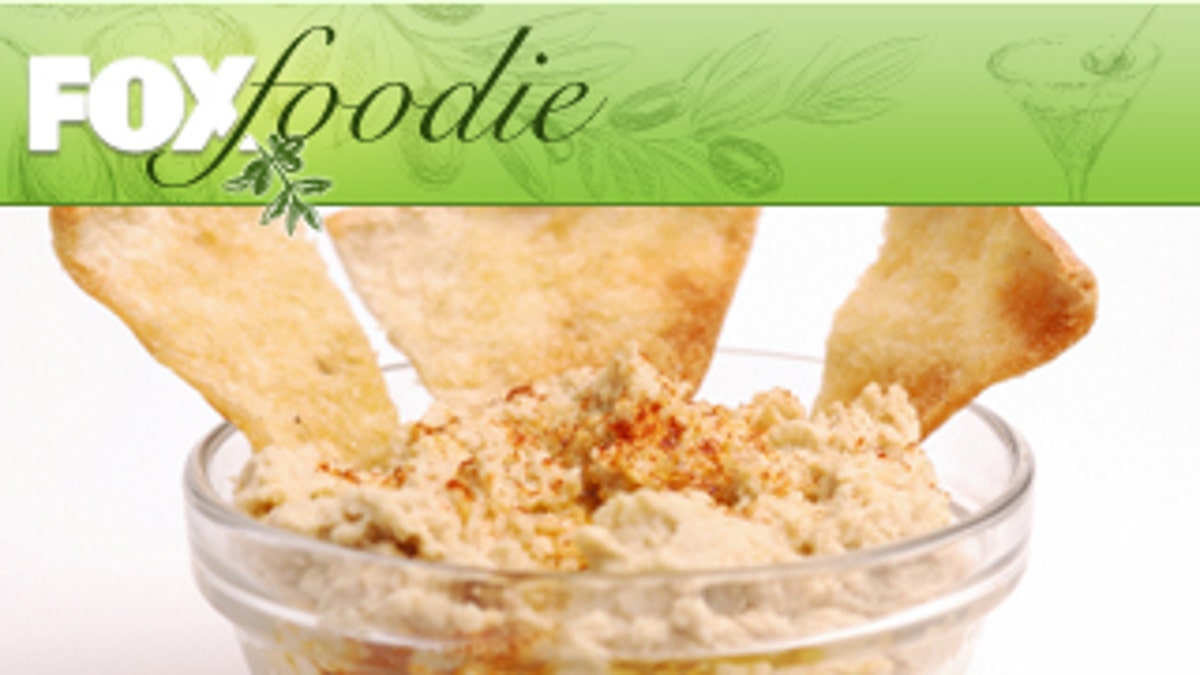
Depending on which version you believe, the Roman orator Cicero was either named for an ancestor, or was himself the ancestor with a wart on his nose that resembled a chickpea in both size and shape. “Cicer” was Latin for chickpea. “Ceci” is the Italian word for both chickpeas and warts.
In “You Don’t Mess With the Zohan,” - a film with more than a few warts of its own, Adam Sandler’s Israeli spy-turned-hairdresser character brushes his teeth, styles hair and douses a fire with hummus, the middle-eastern chickpea-based dip. Talk about a versatile legume.
We’ve eaten chickpeas for nearly 10,000 years and been cultivating them for 7500. According to the Center for New Crops and Plant Products at Purdue University, archeological evidence shows chickpeas were domesticated first in the Middle East then widely cultivated in India, the Mediterranean, the Middle East and Ethiopia. Arabs and Israelis call them hommes; Turks, lablabi; Ethiopians, shimbra; Italians, ceci; Indians, Bengal gram or channa; Latin Americans, garbanzos; Americans, chickpeas.
Hummus’ other main ingredient is tahini, a thick paste made from hulled, lightly roasted sesame seeds. Soak the seeds in water, crush to separate bran from kernel, submerge in water, skim off the kernels which float to the top, toast and grind into a paste. Blend with boiled, pureed chickpeas, olive oil, lemon juice, salt and garlic and you get hummus. This centuries-old Middle Eastern dip eaten with pita, crackers or freshly cut vegetables, has become increasingly popular with Americans in recent years.
“As a dip and a snack, it’s a better option for people. It’s not mayo, not a sour cream dip. You’re doing your body a service,” says Shai Dinur, Product Development Manager for Tribe Hummus of Taunton, Massachusetts, of the dip’s low-calorie, high-fiber, high-protein punch. He attributes its growing popularity as much to Americans’ appreciating its great taste as to its health benefits.
U.S. hummus consumption increased 35% over the last 21 months, with sales reaching nearly $300 million, according to Information Resources Inc., a market research company that analyzes the consumer packaged goods industry. Not a huge number compared to dips like salsa, but the growth is telling. In 2006, hummus was in12% percent of households, rising to 17% by early 2009. That’s due in part to the varieties now available like lemon, roasted garlic and roasted red pepper and to the fact that we’re getting more creative with it. We spread it on sandwiches in lieu of mayo or mustard, smooth it over fish or chicken, slather it on baked potatoes instead of sour cream and make it the main ingredient in vegetarian sandwiches.
Hummus in Israel is like peanut butter in America, Nutella in Europe or Vegemite in Australia. “It’s in 95% of Israeli homes and almost every Israeli restaurant serves it as an appetizer, a side-dish or a main course,” says Dinur - hence it’s recurring role in “Zohan.” Tribe’s VP of Marketing, Gitti Crowley, attributes its growth to America’s embrace of ethnic foods in general, and its simultaneous experimentation with food of all kinds over the last 15 years. “Americans have traveled more and have been exposed to more, and with the rise of restaurant chefs and celebrity chefs there’s a curiosity about and a willingness to try new and exotics flavors,” she says. And as consumers get smarter about what they eat, they look at labels as much for what’s in food as for what isn’t.
That’s why Tribe is preservative-free says Crowley. “We have a real passion for making hummus and we’re the only national all-natural hummus out there. Preservatives can give a kind of ‘off’ taste. We don’t have that. We have a very fresh, clean taste on the tongue.” Taste is equally important. “We’re a snack-food,” she says, “and snackers are variety-seekers” so they offer four types of organic hummus in addition to fourteen other flavors.
Crowley says hummus’ zinc, folate and protein make it a great post-workout snack - a big flavor hit minus the fat. Chickpeas are high in fiber and when combined with garlic, she says, have a cholesterol-lowering effect. “There’s always the trade-off. You choose something delicious but it’s not good for you or you eat something healthy but sacrifice taste. Hummus lets you not have to choose,” she says.
For Israeli-native Dinur, who’s been consuming hummus since infancy, making it is practically a calling. This man takes hummus very, very seriously. You get the feeling he’d find “Zohan”… disrespectful.
Dinur says Israel has quality standards just for hummus, “It’s that important,” he says. “Everybody thinks it’s easy to produce hummus. ‘I can do it from home. I buy cooked chickpeas, tahini, make it myself.’ But it won’t taste like hummus.” When a product has so few ingredients everything depends on the quality of the raw ingredients and the obsessive intensity of the person who chooses them. There’s no room for error.
“There are so many tahinis out there. Every tahini is different. Every sesame is different. Sesame grown in the US tastes different from sesame grown in Morocco. You need great tahini for hummus. You don’t know where the sesame is from in tahini you buy yourself. Chickpeas are all different. Every chickpea will absorb different amounts of water depending on where it’s from, how it’s grown. They have different flavors, different viscosity. Everything differs from to variety to variety. You think hummus is easy? It’s not so easy,” he says.
Though Taunton has a laissez-faire attitude towards hummus, Dinur sets his own high standards, though he shrouds them in mystery. He sources all the chickpeas himself, “from where, I cannot tell you. It’s a secret.” He chooses the tahini, “I can’t tell you. The source, it is secret…the recipes, they’re all secret.”
Maybe there’s a role for him as a secret agent in the next Zohan film.
